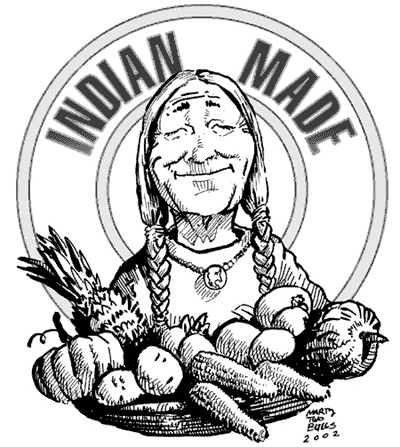By James Treat
A notable effort to reconceive "America" on the basis of culinary geography is documented in the recent book Renewing America's Food Traditions. Edited by ethnobotanist Gary Paul Nabhan, this lavishly illustrated volume grew from the timely collaboration of seven major organizations committed to "saving and savoring the continent's most endangered foods."
Nabhan and his colleagues have mapped North America—including Northwest Mexico and most of Canada—by identifying thirteen regional "food nations" distinguished by place-based foodways. Each food nation is named for an iconic dish, and anyone familiar with Mvskoke tastes will be gratified to learn that Mvskoke country, both before and after Removal, is encompassed by "Cornbread Nation." Back east, this region borders "Chestnut Nation" and "Gumbo Nation" in the Mvskoke homeland; out west, this agricultural complex shares a boundary with "Bison Nation" running across the Muscogee (Creek) Nation.
Finally, in 2004, botanists working at Horseshoe Bend National Military Park found six cross-compatible species of native Prunus—including P. angustifolia—near the site of Tohopeka village. It now seems clear that the original specimens taken from Hillabee, a few miles to the west, had been carefully cultivated by Mvskoke growers.
Nabhan and his RAFT colleagues extol this plum for its "primacy among the continent's great fruits," concluding that "perhaps the Creek were more accomplished horticulturalists than anyone has given them credit for."
So much for the savage stereotype: the notion that Indians had no understanding of scientific concepts. Of course they did, as we can tell from their food, medicine, architecture, and astronomy.
For more on Native food, see Indians Made Turkey Dinners Possible, Preview of Growing Native, and Native Foods Changed the World.


No comments:
Post a Comment